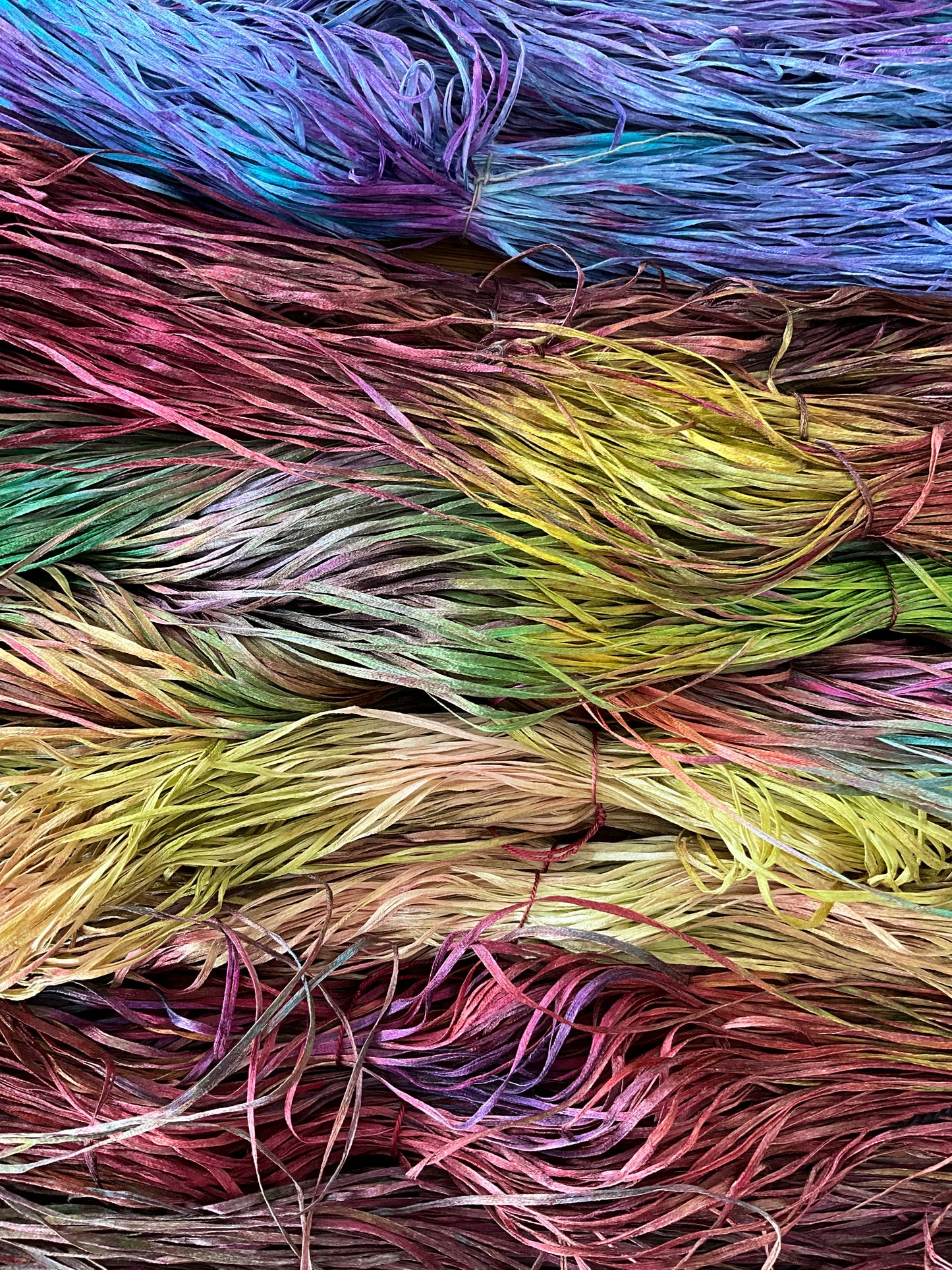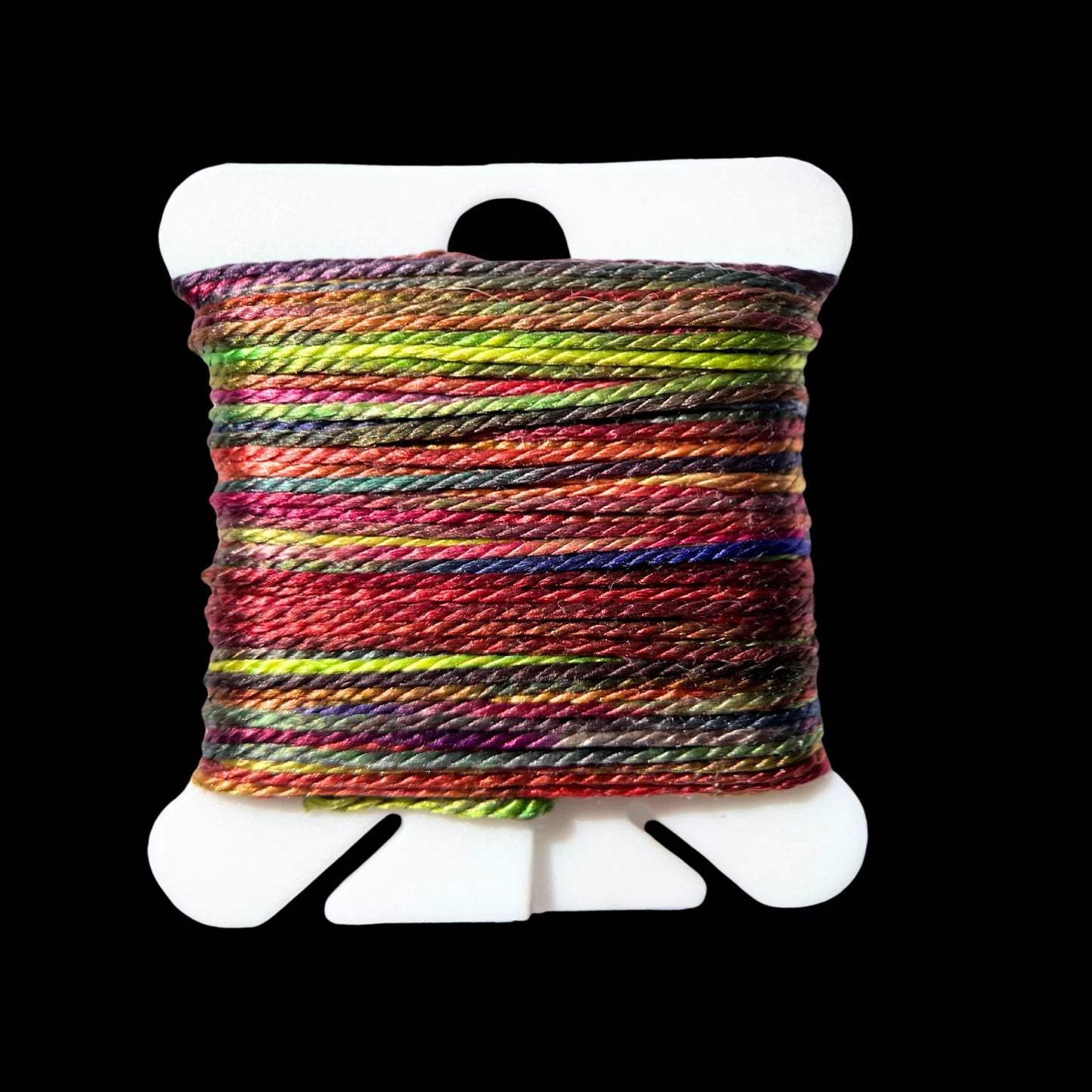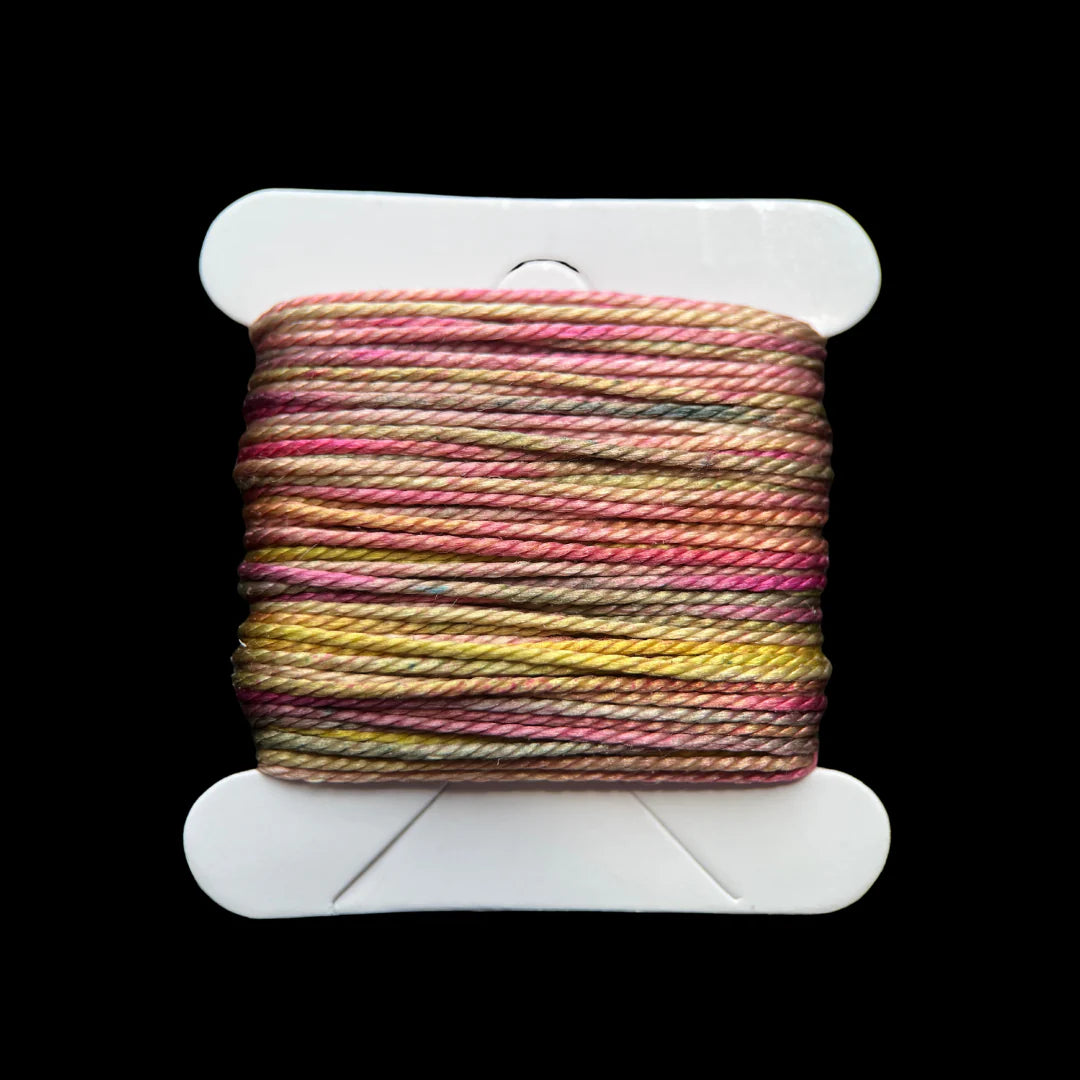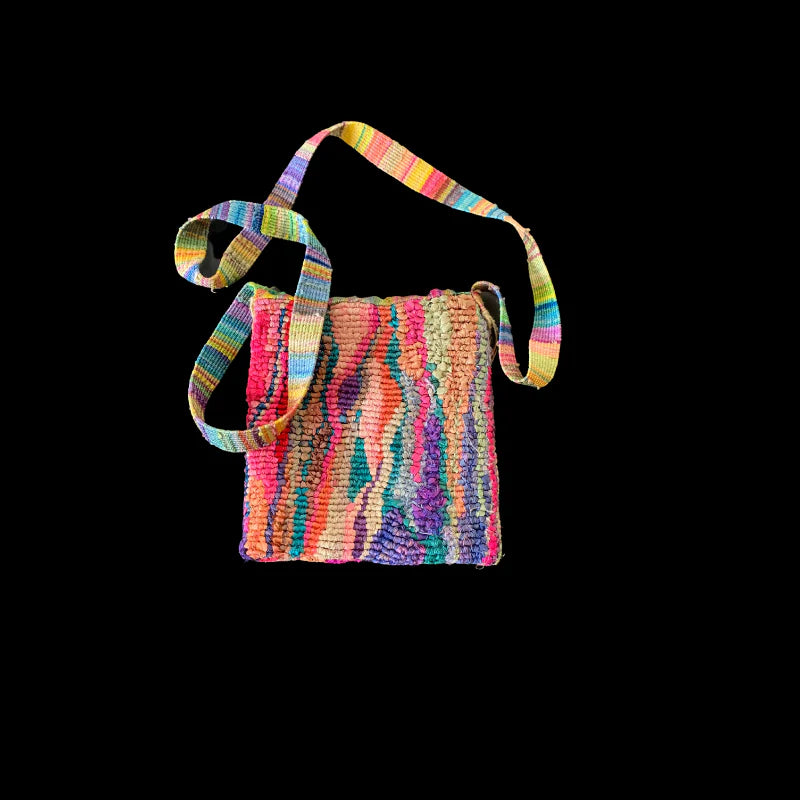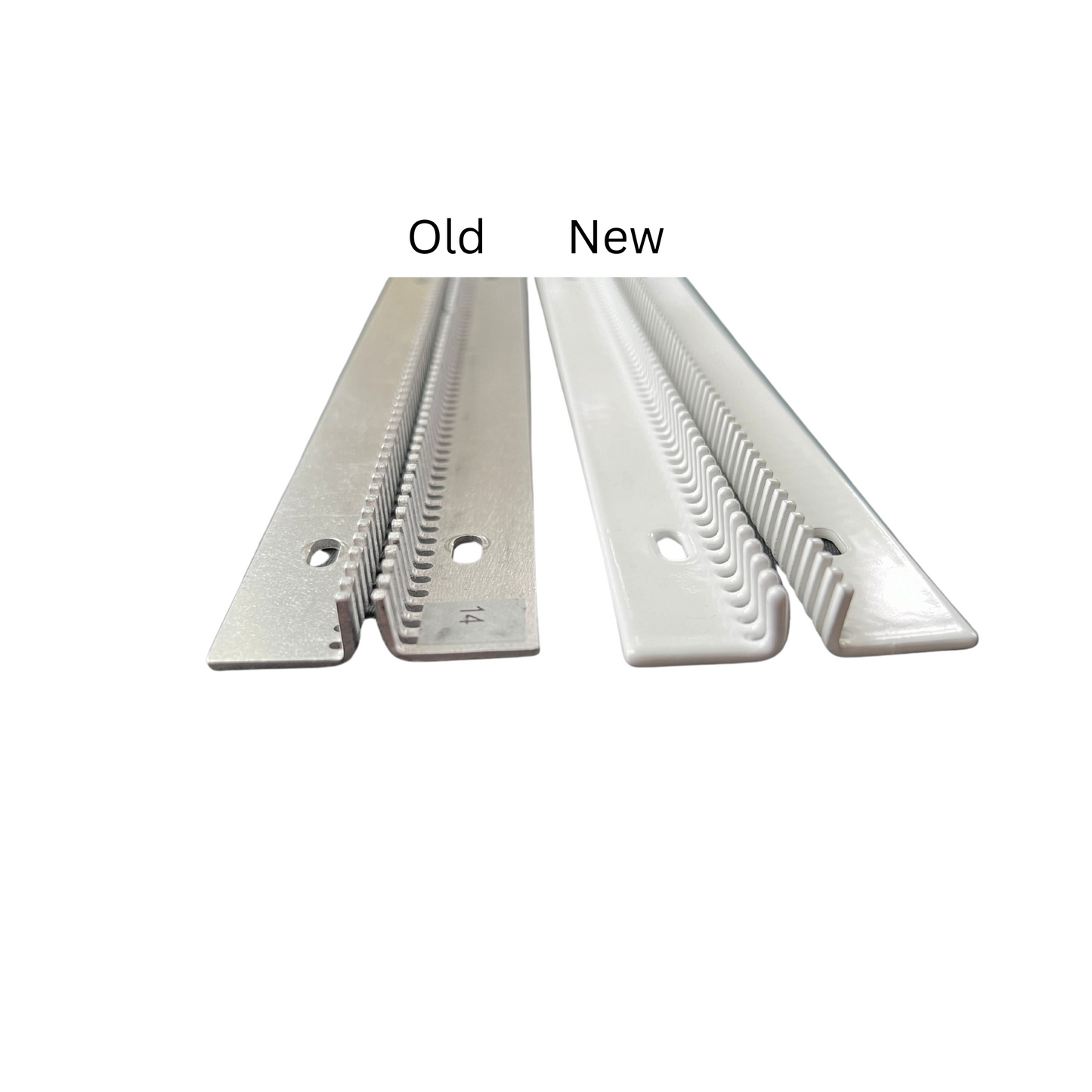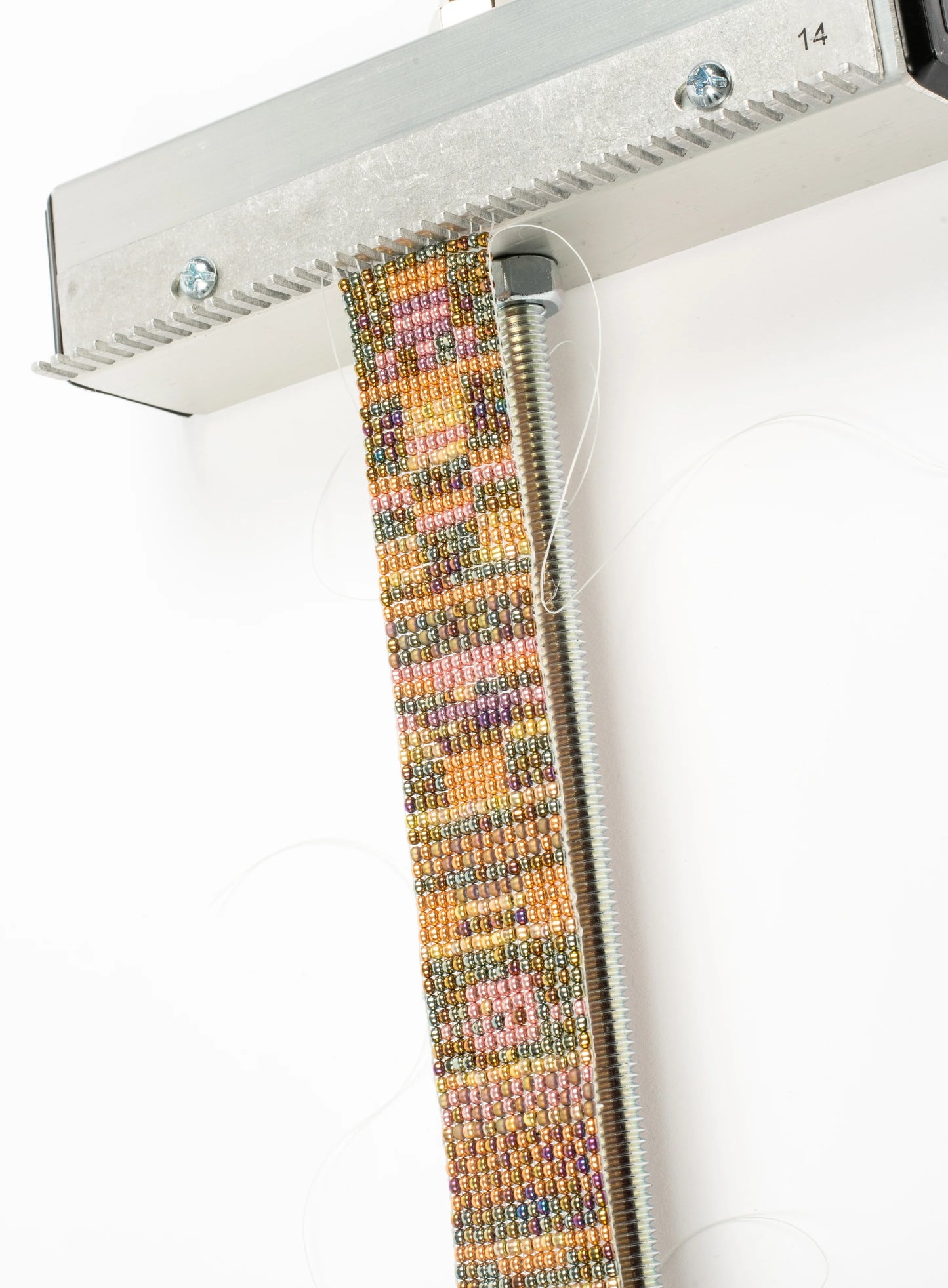
New to tapestry? We define some basic terms here.
New to tapestry? We define some basic terms here.
Tapestry: Tapestry is a type of fiber weaving. It is weft-faced (ie: the warp does not show at all), the wefts are generally discontinuous (they do not go from selvedge (edge) to selvedge (edge)) and it is generally pictorial (like painting a picture with fiber). But when weaving something like a table runner, wefts tend to go selvedge to selvedge and it’s usually not pictorial. The actual form of weaving is plain weave which means the pattern you weave is under one thread and over the next. Other forms of weaving include warp-faced weaving where only the warp threads show and even weave, where equal amounts of weft and warp show. You can see that if you are entirely covering the warp threads, those threads will have no visible effect on the weaving since they will not show. The warp threads become your canvas but unlike an actual canvas for painting, it will not show at all.
Warp and Weft: These are the foundation of your weaving. The warp is the thread you put on the loom. The weft is the thread you weave into the warp.
Selvedge: The dictionary calls it: “an edge produced on woven fabric during manufacture that prevents it from unraveling.” Basically, it refers to the sides of your piece. It can also refer to the top and bottom of your piece once you’ve removed it from the loom and finished the edges. This piece will basically be a four-selvedge piece if woven on the Saffron Loom since all four sides of the weaving are finished while still on the loom.
Line: When weaving tapestry it is important to know that a line is made when all warp threads are covered by the weft. To make a line you must make two half-passes, meaning you weave across in one direction (one half-pass) and then come back in the other direction (one half-pass) creating a line. Understanding this will help you understand different tapestry techniques.
Pulling In: Pulling in is when your tapestry starts at one width and gets thinner and thinner as you weave. It is one of the most common problems that beginning tapestry students encounter.
Some tips to prevent pulling in:
-Keep good tension on your loom.
-Bubble your weft. We will get into that in lesson two, but it is the single most important thing when weaving tapestry. Not bubbling enough or even bubbling too much can lead to funky selvedges and you do not want that!
-Measure the width of your piece every few rows and adjust if it seems you are pulling in.
-A trick for controlling the weft when wrapping around a selvedge warp is to hold the loop of weft with your hand while gently pulling it through the warps. Make sure that loop is neither so tight it pulls the warp in or so loose it leaves too large a loop.
-When weaving the body of the weaving also be careful not to pull internal warps out alignment when changing direction.
Header: Most tapestries start with a few rows of warp material. Usually this is folded to the back.
Footer: This is what is used to finish a tapestry. It is just like the header but happens at the end of the pice.

